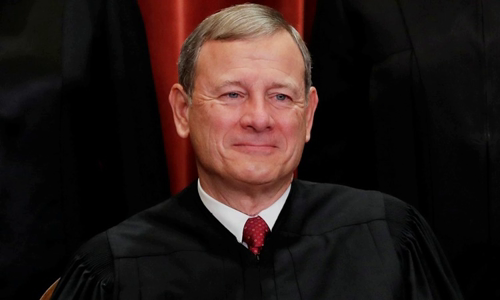Supreme Court Chief Justice John Robert has the right to "preside" the dismissal of Trump, but this right is not clear in the US Constitution.
There are two parts to the US Constitution that are becoming particularly important in Washington at this time. The first is Clause 4, Article II, which prescribes that the president, vice president and all public servants can be removed from office if they are considered dismissed for treason, bribery or committing crimes and wrongdoing. other left.

Chief Justice John G Photo: Reuters
Meanwhile, Paragraph 3, Article I states that the Senate is the only place with the right to adjudicate dismissing the president. When the US president is tried, the Chief Justice of the Supreme Court will preside over and no one will be convicted if two-thirds of the Senate members disagree.
Simply put, the president can be considered dismissed in a trial held in the Senate. If two-thirds of the Senate members choose to convict, the president will be removed from the White House chair. The entire process took place under the chair of John G. Roberts Jr, Chief Justice of the US Supreme Court.
Chief Justice Roberts's long-standing role is to preside over and supervise the proceedings. But this doesn't make much sense at the presidential review hearing. In fact, this is purely a political process decided by the majority party in the Senate.
When the Trump recall recall began in September last year, the Washington Post interviewed experts to assess the Senate majority leader Mitch McConnell's powers while conducting the review process. treat. Experts agree that McConnell has great power, even stopping the trial as soon as it begins, even if it isn't the presiding judge.
On January 20, McConnell proposed rules at the hearing that dismissed Trump, restricting opening statements and evidence that could be submitted to the Senate. McConnell's action immediately sparked a wave of protest and questioned just how much Chief Justice Roberts really had a supervisory and controlling role in the role of a "vigorous balancer".
"The US Constitution does not mention what we want to know, specifically what the right to 'preside' means," said Louis Michael Seidman, a professor of constitutional law at Georgetown Law University.
He noted that in the previous two dismissal hearings of President Andrew Johnson in 1868 and President Bill Clinton in 1999, the two chief justices had different handling methods.
"During the Johnson trial, the Chief Justice (Salmon P.) Chase played a rather proactive role," Seidman commented. "He voted in some cases, when senators disagreed, and actively directed the trial. In the Clinton trial, Judge (William H.) Rehnquist hardly did. nothing".
It is unclear what Chief Justice Roberts will play in Trump's trial. But Seidman said that in the absence of specific instructions in the Constitution, he could help to adjust the way the trial takes place.
"He can also take some actions, such as objecting to testimony or arguing in court, admitting or denying evidence and witnesses and many other issues," Seidman wrote. "Still, he may be vetoed by a majority of senators."
According to Seidman, Roberts is a conservative judge who does not want to show that the Supreme Court is partisan, so it is unlikely that he will make decisions that greatly influence the process. Trump's trial dismissed.
"If Democrats think he will intervene and take their side, they're joking with themselves," Seidman said.



 CandyMason
CandyMason







